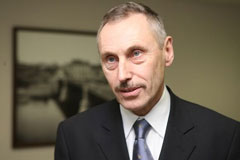Economics, Energy, Financial Services, Lithuania
International Internet Magazine. Baltic States news & analytics
Monday, 29.12.2025, 06:26
Sekmokas: electricity exchange moves Lithuania from planned economy to market economy
 Print version
Print version |
|---|
| Arvydas Sekmokas. |
"Without a doubt the most important news is that the first electricity exchange has started to operate in the Baltic States successfully and that it is the first real step towards the establishment of the single electricity market of the Baltic States. We see that international trade is functioning already in the first working days of the Lithuanian exchange. This year we hope to expand the activities of the exchange in all the Baltic States. What is more, it is essential that Lithuanian companies have been used to work under market conditions for a long time and now are able to choose an electricity supplier who offers the lowest price. This indicates that the trade in the exchange is an advanced way of electricity supply as the price is determined by the balance between the supply and demand rather than by a predetermined tariff which frequently no longer serves the needs of companies anymore," Sekmokas said.
The electricity exchange trades electricity produced in Lithuania or imported from Latvia, Estonia, Scandinavia, Russia, Ukraine and Belarus. The principle of the trade is an auction; the price is set at the point where the supply and demand curves intersect. Hourly trade takes place at the exchange. Presently, there are 27 market participants who have the licenses of independent suppliers, informs ELTA/LETA.
This year up to 35 percent of the electricity needed by Lithuania will be sold at the exchange. Each year this indicator is expected to increase by around 10 percent. No regulated tariff will be applied to household consumers from 2015.








 «The Baltic Course» Is Sold and Stays in Business!
«The Baltic Course» Is Sold and Stays in Business!

